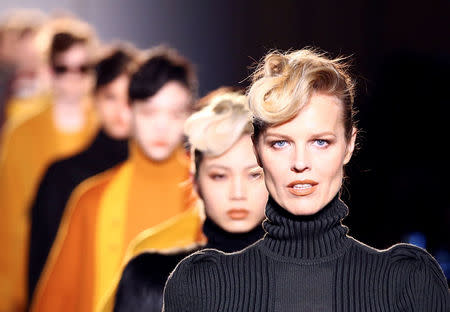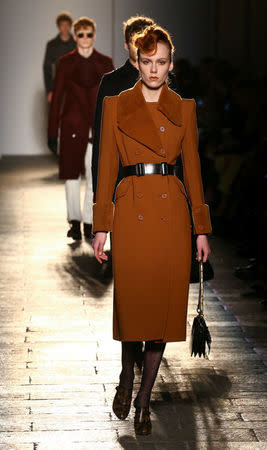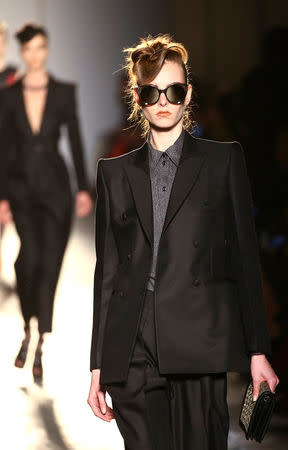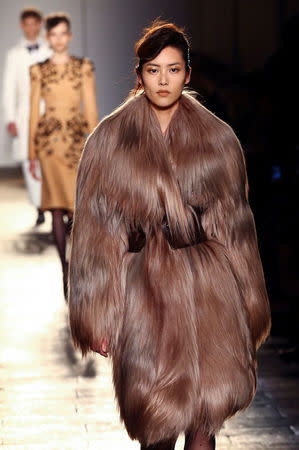Bottega Veneta plays in Milan an ode to rigor and elegance
By Giulia Segreti MILAN (Reuters) - Italian fashion house Bottega Veneta composed an ode to sharp, rigorous yet elegant shapes on its Milan catwalk on Saturday, in its first true combined men and women's show. The brand, part of luxury group Kering, has decided, like peer Gucci, to unveil both collections at once, in a move aimed at giving buyers and customers a more complete idea of their designs. It had tested the format during the last Milan fashion week, in September, to celebrate its 50th anniversary. "The men's and the women's complement each other. They were designed at the same time and speak the same language," said Creative Director Tomas Maier in a statement. The collection rotated around very strong shoulder lines, fitted waists and round hips, with some designs recalling the glamor of the 1940s. The show, set in Milan's Brera Academy of Arts, opened with famed model Eva Herzigova wearing a black ribbed turtleneck sweater with wide shoulders over riding trousers, in tall wedged boots. Models followed in sharp designs of long coats, cashmere jackets, capes, masculine double breasted suits, wide knee-length trousers and woollen skirts. In some creations, the exaggerated shoulder lines were accentuated further by goat hair fur, velvet details, embroidery and studs. "It's like this silhouette has been drawn, starting from a precise shoulder line... and you can see the pencil mark on a sketch," Maier added. Black was worn alongside warmer tones such as terracotta, ochra and brown as well as burgundy and blue. For the evening Maier designed long dresses that appeared like liquid metal, skirts and long capes embellished with studs. Men wore various interpretations of tuxedos, from more traditional and tailored shapes to more casual fitting ones. The collection was dotted with big bags, bucket shaped ones in the group's signature intrecciato, woven leather, design and the well-known "Olimpia" knot clutch and "Lauren" bag. (Reporting by Giulia Segreti; Editing by Ros Russell)






